Creating a weekly lesson plan is key for keeping the classroom organized. It helps make sure students meet their learning goals. Planning lessons doesn’t have to take up all your time. By looking at the whole curriculum, teachers can find new ways to teach and keep subjects connected.
It’s important to have clear goals for what students will learn. These goals should match the activities and tests in the classroom. This helps guide how students will learn.
It’s also crucial to balance teaching with taking care of yourself. Setting priorities and routines can make planning easier. This way, you can meet your teaching goals and still take care of yourself.
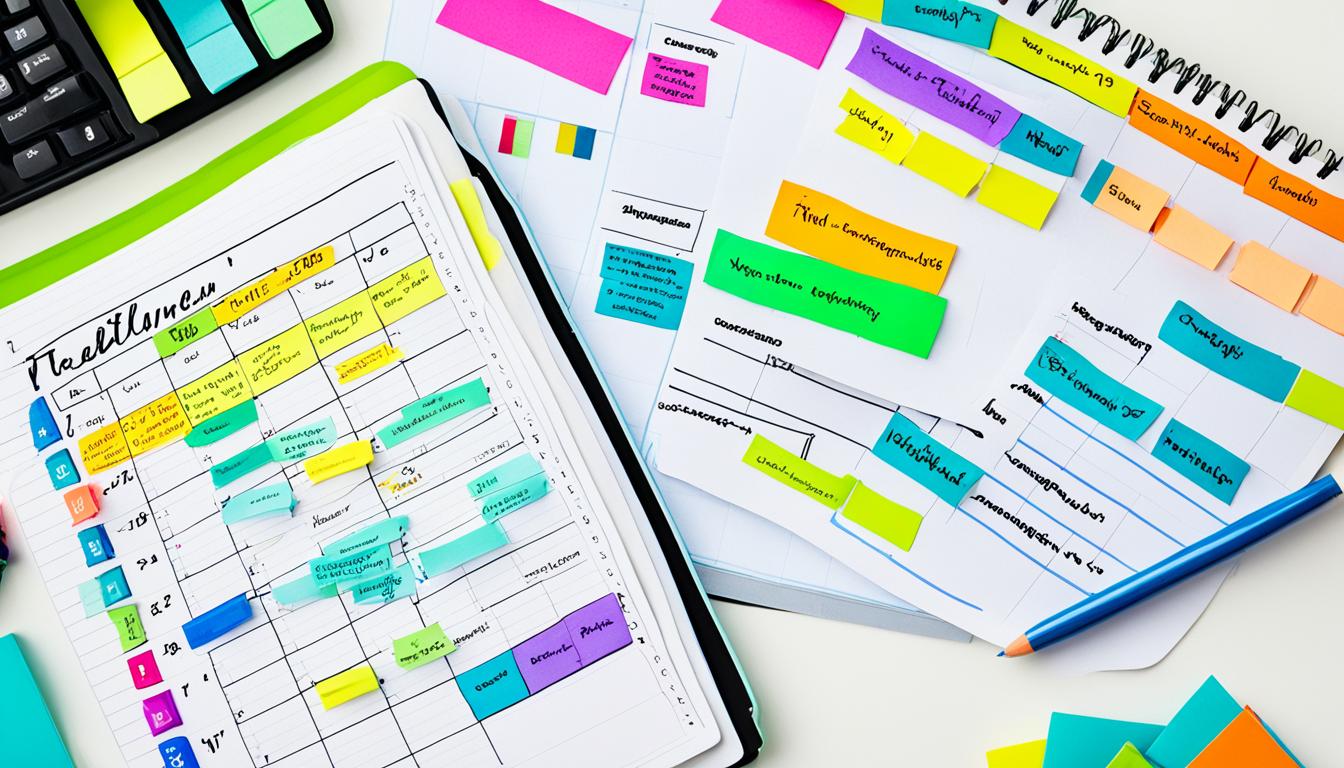
Key Takeaways
- Incorporating SMART goals in lesson planning can remarkably boost the effectiveness of teaching strategies.
- Differentiation techniques can enhance overall classroom performance by preventing student disengagement due to boredom or frustration.
- Interactive and real-world activities can significantly improve student motivation and learning outcomes.
- Having alternative plans ready can ensure smooth lesson delivery and student engagement during unforeseen circumstances.
- Flexibility in teaching methods can lead to better adaptability and improved learner comprehension.
Start with the Curriculum as a Whole
Knowing the whole curriculum is key for good teaching. Mapping the curriculum helps teachers spot cross-links, update old parts, and adjust to new info. Seeing the curriculum fully is crucial. A yearly overview helps teachers link topics across subjects, boosting knowledge and vocabulary.
Starting a curriculum plan takes time and patience, especially for beginners. The author took about two years to begin, planning in the summer. This early planning makes lesson planning easier and less stressful later.
When making a curriculum plan, think about the school calendar, standards, and resources. The author suggests using a standards app for better alignment with standards. This makes planning smoother.
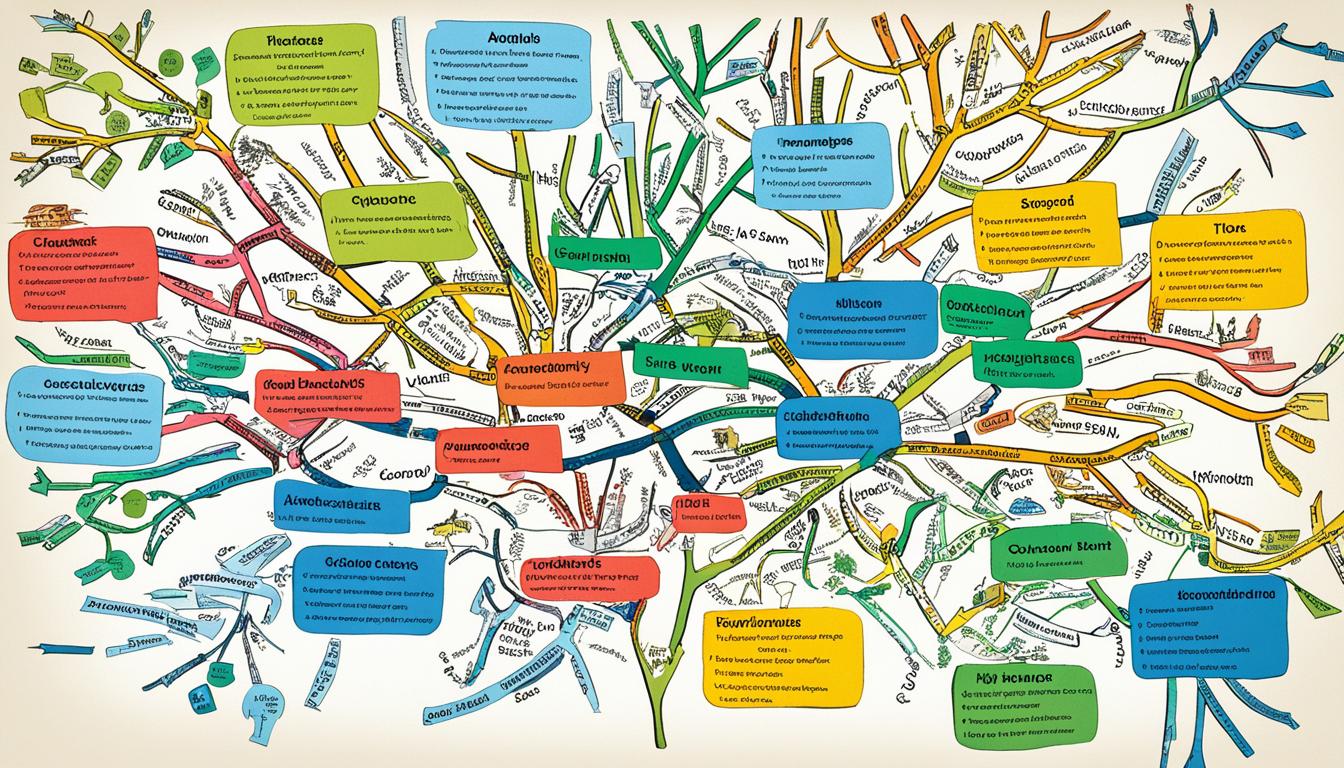
Adding things like curriculum page numbers, spelling words, and art examples makes the plan better. Including various resources makes teaching and learning more complete.
Adding cross-curricular links makes learning broader and helps students remember more words. It’s important to update the plan often to keep up with changes. Many teachers use Planbook.com for weekly planning, at $15 a year. It has tools for extending lessons, sharing plans, and tracking standards.
Resource TypePercentageEdutopia Resources60%Transformational Lessons20%Common Core Standards15%Open Educational Resources (OER)7%Project-Based Learning (PBL)5%
Visual plans and templates help teachers see goals and connections clearly. A well-planned curriculum mapping makes the school year smooth and stress-free.
Decide on the Key Learning for Individual Lessons
Choosing what to focus on in lessons starts with knowing what you want students to learn. Make sure these goals match the big picture of the curriculum. This way, you focus on what students will gain, not just what they’ll do.
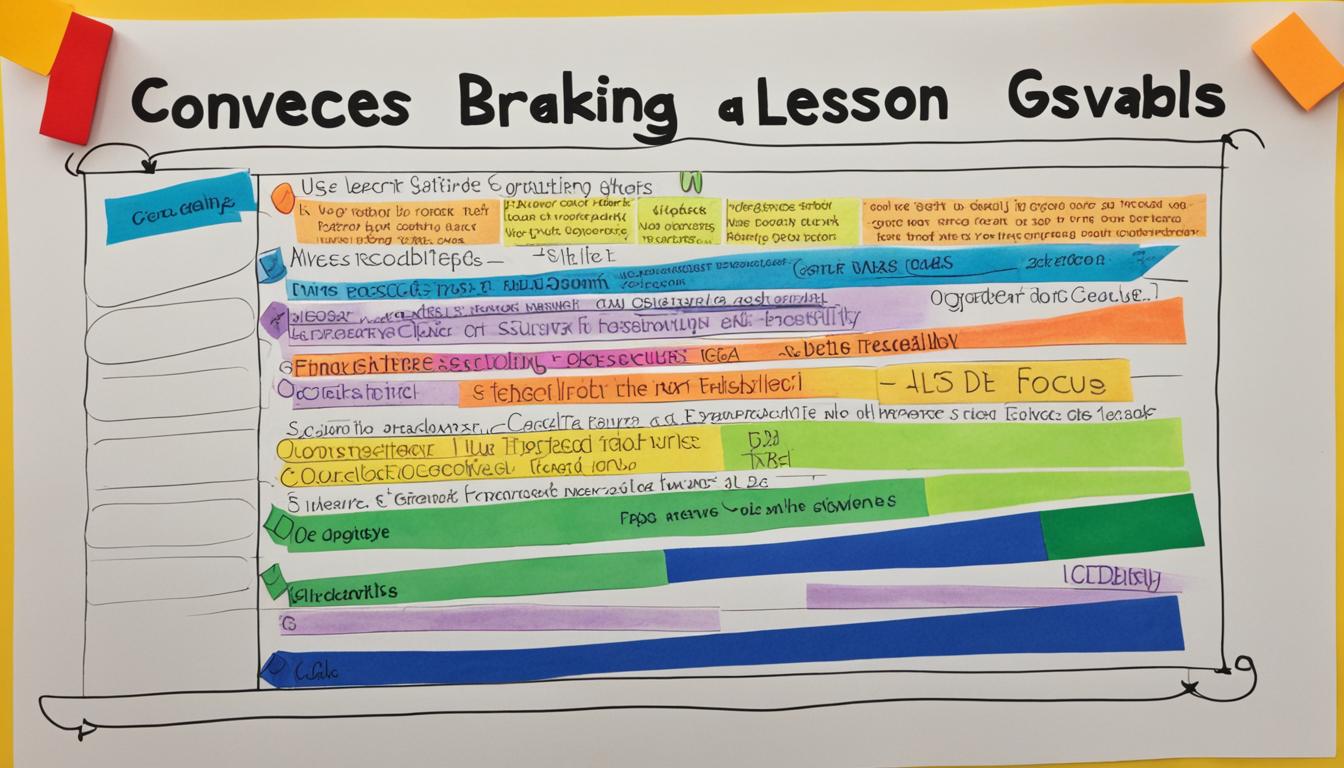
Setting Clear Learning Outcomes
Start by picking 2 or 3 main ideas or skills for each lesson. This makes your lessons focused and helps manage time well. List and rank these goals to know what’s most important. Also, plan for extra time for flexibility.
“A list of ten learning objectives is mentioned, but it’s advised to narrow it down to two or three key concepts, ideas, or skills for better focus.”
Creating Stimulating Key Questions
Good questions spark discussions and check if students get the lesson. Choose questions that predict answers and decide if answers should be out loud or in writing. This keeps students active and shows how well they understand the lesson.
Give students a clear agenda, either on the board or a handout. This helps them stay focused and know why each activity matters.
- Outline the learning objectives and rank them in order of importance.
- Estimate the time required for each activity, with extra time for flexibility.
- Use specific key questions to check for student understanding.
- Present a clear agenda to students to keep them engaged.
After each class, think about what worked well and what could be better. By improving your lesson plans, you make learning more effective and fun for everyone.
Using Existing Resources
Using educational resources can make lesson planning easier. Teachers can then focus on making lessons fun and effective. Twinkl is a great place to find printable and digital materials for the curriculum. It has lots of resources for different teaching styles and subjects.
Sharing materials with colleagues can save time and improve lessons. In a department of seven teachers, working together can share good strategies and resources. This helps all teachers use their skills better and follow state standards.
It’s important to use resources that make learning fair for everyone. Groups like A New Direction and Diverse Educators offer tools for making lessons inclusive. These tools help teachers meet the needs of all students.
Let’s look at how using existing resources can save time:
ActivityWithout Existing ResourcesWith Existing ResourcesLesson Planning4 hours/week2 hours/weekMaterial Gathering3 hours/week1 hour/weekAssessment Preparation2 hours/week1 hour/weekTotal9 hours/week4 hours/week
Using educational resources like Twinkl gives strong curriculum support. It cuts down the time spent on planning and getting materials. This lets teachers focus more on helping students and growing professionally.
Refer to Previous Learning
To make lesson plans work well, it’s key to use what students already know. Connecting new ideas to what they already understand helps a lot. Studies say students forget a lot of what they learn just an hour later.
So, it’s important to use strategies that help with this.
Building on Prior Knowledge
Starting new topics with activities like mind-mapping is a good idea. It lets teachers see what students know already. Using digital tools like Weje’s free digital whiteboards also helps a lot.
People take in about 90% of information with their eyes. This method reviews what students know, fills in gaps, and fixes wrong ideas.
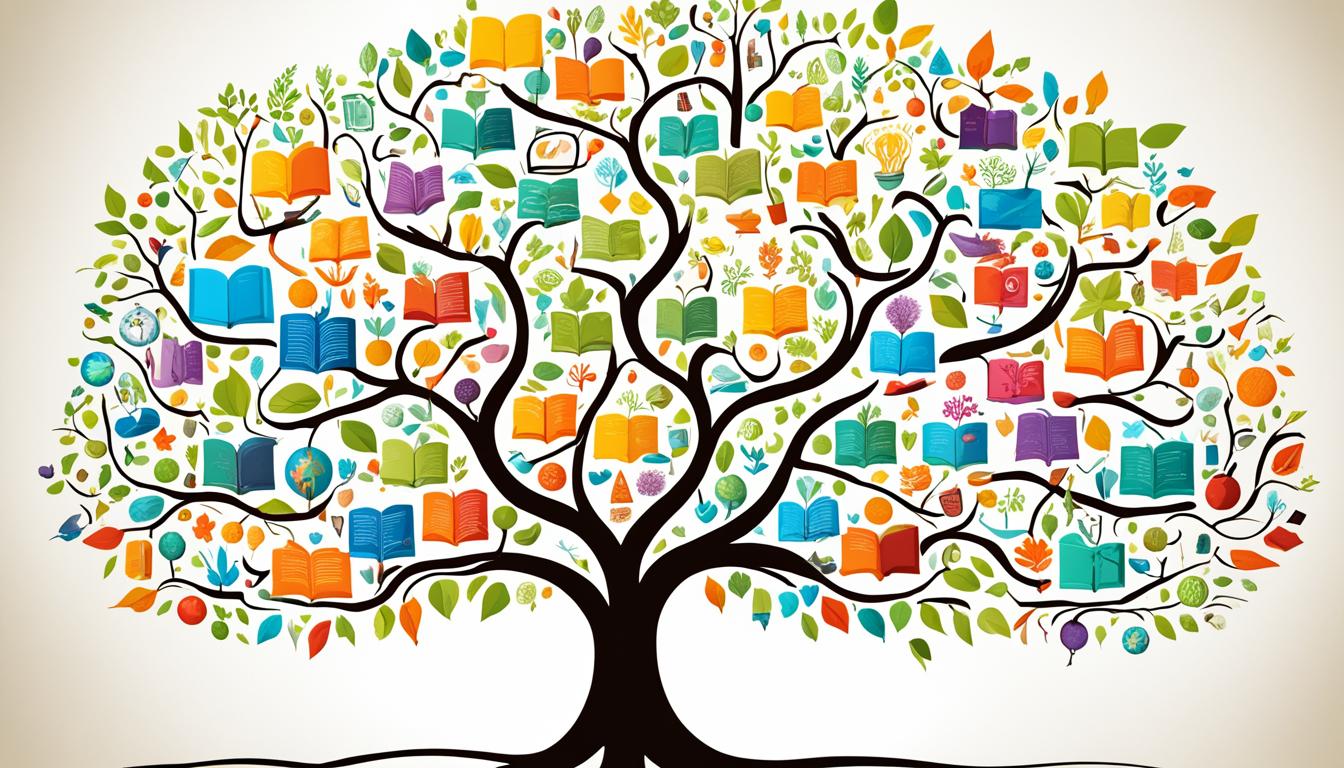
Incorporating Reflection Activities
Adding reflection to daily lessons helps students remember better. Reflection helps students think deeply about new info. By asking students to Show What You Know through writing or talking, teachers can fix wrong ideas fast.
Humans forget a lot of new info unless they check on it soon. That’s why reflection is key for keeping information in the long run.
Have a Hook to Engage Students
Effective lesson hooks are key for getting students to pay attention and stay interested. These creative hooks grab their attention and make them curious. They make learning more fun and relevant. Starting a lesson with an engaging hook helps build a strong classroom community and encourages deeper talks.
Utilizing Visual and Interactive Materials
Visual and interactive learning materials are great for hooks. Using images, videos, or mystery objects can really catch their eye. Activities like See, Think, Wonder and Predicting with Pictures get students involved in many subjects.
Michele Haiken, a teacher with over 24 years of experience, shares tips in her books. Her new book, ”Creative SEL: Using Hands-on Projects to Boost Social Emotional Learning”, talks about creative ways to keep students hooked.
Peter Liljedahl suggests using vertical surfaces to encourage students to think more. Activities like Legos and Play-Doh, Gallery Walks, and Four Corner Debates make learning exciting and spark discussions.
- Legos and Play-Doh: Engage students with hands-on activities.
- Gallery Walks: Utilize chart paper for idea sharing.
- Four Corner Debate: Foster discussion and critical thinking.
Feely bags and feely boxes work well for younger students. Surveys can link lessons to real life, making them more meaningful. Music, digital tools like OneNote, and guest speakers can also make lessons more engaging.
Be Realistic About Time Management
Teachers need to plan well to use their time wisely in the classroom. It’s key to set aside time for planning lessons, grading, and meeting with students. Breaking tasks into smaller steps helps teachers handle big tasks better.

Using a Time Management Spreadsheet is a good idea. It helps students plan their time for school, sleep, fun activities, and free time. By knowing how much time they have for free, students can choose to spend it on self-care, exercise, or being creative. This helps with planning and keeps their schedule balanced.
- Use a timer for social media to reduce distractions.
- Create a daily schedule to maintain consistency.
- Have an accountability buddy to stay on track.
- Utilize post-it reminders as visual prompts.
- Set SMART goals: specific, measurable, action-oriented, realistic, and timely.
Managing time well in the classroom means taking breaks during the day. These breaks boost productivity and prevent burnout. Teaching students to set and track deadlines with a stoplight system helps them handle their work better.
“Planning ahead and being proactive can optimize a teacher’s time at school,” emphasizes an educational expert.
Tools like Let’s Go Learn assessments offer detailed data for better learning. Reflecting on teaching and schedules can make time management better. This helps both teachers and students use their time well.
Time Management StrategiesBenefitsBreaking Down TasksReduces OverwhelmTaking BreaksIncreases ProductivityUsing Time Management SpreadsheetFosters Balanced SchedulesSetting SMART GoalsClarifies ObjectivesLet’s Go Learn AssessmentsInforms Personalized Learning
Include Pupil Voice in Planning
Adding student voice to lesson planning makes classes more fun and interactive. When students share their thoughts and work together, they get more involved in learning.
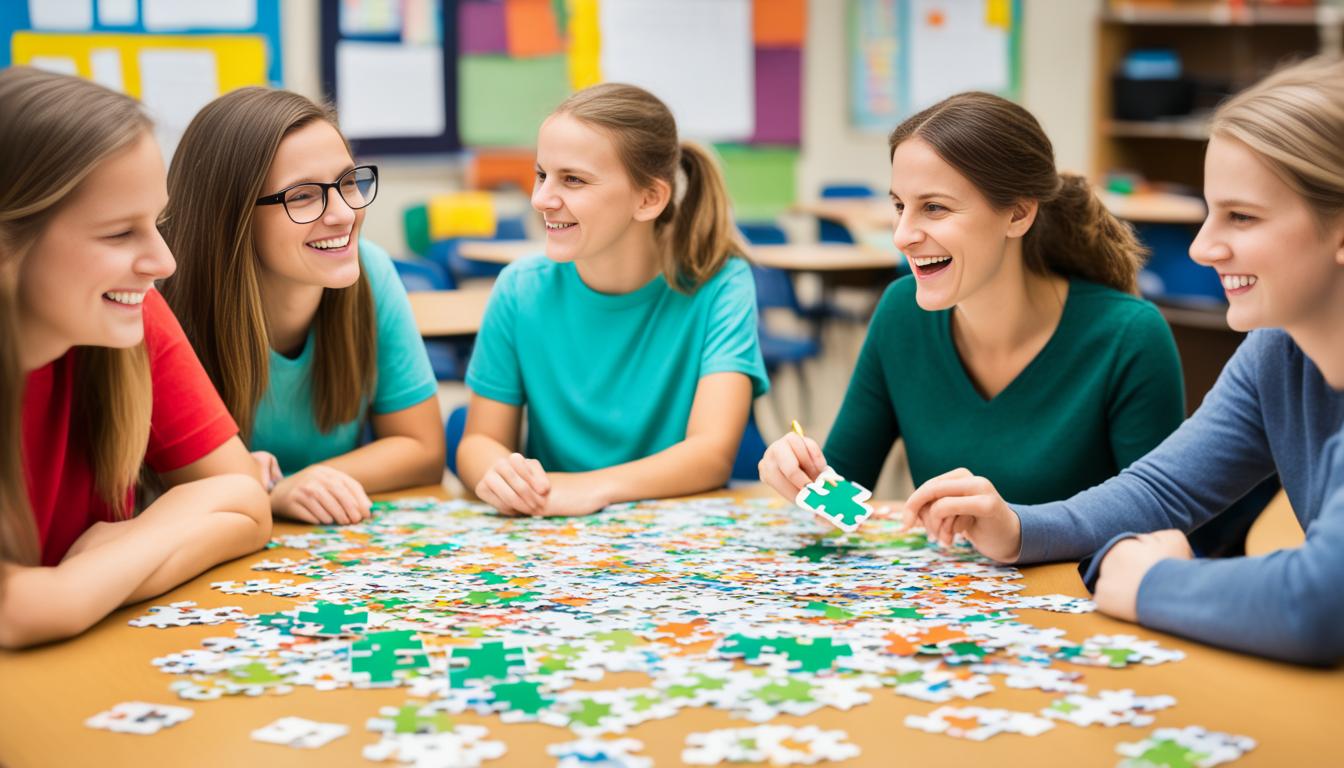
Opportunities for Student Input
Letting students share their ideas and join in classroom discussions makes them feel part of the class. They can choose what they do, present, or share news. This helps them feel more connected to their learning.
Studies show that when students help out, they do better in school.
Feedback Mechanisms
Using feedback is a great way to hear more from student voice. Asking students what they think helps make lessons better. It also tells them their opinions matter.
Good relationships between teachers and students make students open up. This creates a place where everyone feels heard and valued.
StrategyBenefitsOffering Choices in AssignmentsIncreases student engagement and investmentEncouraging Collaborative Problem-SolvingBoosts active engagement through collaborative learningUtilizing Student FeedbackImproves instruction and values student voiceConnecting Learning to Students’ LivesDeepens understanding and engagement
Plan Key Points for Wow Moments and Trips
Switching to planning a whole unit at once opens up chances for wow moments and educational trips. This way, teachers can link lessons with fun experiences. This makes subjects stick in students’ minds.

Think about planning museum visits that match your lessons. For instance, a history lesson can be made exciting with a trip to the Smithsonian or a local museum. Work with cultural partners to create special experiences that make students more interested in the topic.
A binder with tabs for each subject helps with lesson planning. Include standards like the Common Core on a page for each subject. This makes sure lessons meet educational needs. Also, having long-range plans helps plan for big wow moments and trips.
Remember, some school days have less learning time, like before vacation or during tests. Use these days for low-prep and medium-prep activities. Fun activities like charades, writing notes, or group stories can still teach students a lot.
Use resources like Drama Notebook and Listenwise for podcasts to make learning better. For example, talking with other classrooms or experts on Skype can turn a normal lesson into something unforgettable.
Parents often want classes to be more meaningful. Planning for wow moments and trips helps meet this need. It also gives students unique and interesting ways to learn.
Adding a to-do list to your planning binder helps with staying organized. This way, you can easily add wow moments and trips to your lessons. Keeping songs and family sheets handy makes planning easier.
A well-thought-out plan can turn regular lessons into amazing learning experiences. Adding wow moments, museum visits, and trips boosts student interest and deepens their learning.
Have Time Fillers Up Your Sleeve
Teachers need to have time fillers ready at all times. These keep students engaged and make the most of learning chances. They help bridge unexpected gaps in your lesson plan.
Using quick lesson extensions is a smart move. These can be mini-debates, reflection exercises, or more practice problems. Having a list of creative activities meets different learning styles and keeps class lively.
Teachers recommend having many short activities, or time fillers. These include brainstorming, short videos, or brief writing prompts. They fill in unexpected time and make the lesson more interactive.
Here’s a suggested table for quick reference on different types of time fillers:
TypeDescriptionDurationBrainstormingQuick idea generation on a topic5-10 minsReflection ExercisesStudents reflect on what they learned10-15 minsShort VideosTopic-related videos to reinforce learning5-10 minsWriting PromptsBrief, topic-related writing tasks5-10 mins
Quick lesson extensions and creative activities are key for handling unexpected time gaps. By adding these to your lesson plan, you keep students fully engaged. Every class minute becomes useful and meaningful.
Weekly Lesson Plan for Teachers: Importance and Strategies
Lesson planning is key to helping students do well and keeping the classroom running smoothly. Teachers who plan well are ready for anything that happens in class. They know what’s important, follow a routine, and use good resources to teach.
Establishing Priorities
Teachers must put things like student safety and success first. Studies show that how much students learn depends on how well teachers plan. By setting clear goals, teachers can check on progress and change plans as needed.
Good lesson plans give a clear direction for what to do in class every day. This makes sure every activity helps reach a learning goal.
Setting Routines and Boundaries
Good routines and rules help teachers manage their time better. Most teachers say that a well-planned lesson keeps the class running smoothly. These routines make learning consistent and give teachers time to think, check on students, and adjust plans.
This structured way of teaching helps manage the classroom well and keeps lessons running smoothly.
Using Go-To Resources Effectively
Using trusted resources like curriculum maps and pacing guides is important. These tools help teachers plan by linking goals to guidelines. Teachers can then focus on ways to engage students and help them do well.
Creative teaching across different subjects keeps lesson plans flexible and helps everyone, teachers and students.
Here is a comparative overview highlighting the key statistics supporting the significance of well-structured lesson plans:
StatisticPercentageTeachers agreeing that planning lessons ahead facilitates effective teaching.70%Teachers finding that planning lessons ahead helps them deal with student questions more effectively.85%Teachers who believe building a lesson plan offers flexibility and aids in instructional delivery.60%Teachers who think lesson planning ensures clear daily goals for student learning and improves teaching reflection.75%Teachers who find that a well-structured lesson plan helps manage classroom activities efficiently.80%Teachers indicating that a detailed lesson plan provides consistency in class structure and aids substitute teachers.90%
Conclusion
Creating a systematic way to plan lessons is key for better lesson plans and teacher workflow. Teachers should set clear goals using Bloom’s Revised Taxonomy. This makes sure lessons match the curriculum and are fair and achievable.
Using different learning activities keeps students interested. Activities like lectures and projects help students practice what they learn. Assessments, including self and peer checks, help teachers adjust their teaching to what students need.
Good lesson plans have activities in the right order, following Gagne’s Nine Events of Instruction. Teachers grab attention, share goals, and encourage students to remember what they learn. Summarizing lessons and linking to previous ones helps students remember and apply what they’ve learned. These methods make teaching clearer and more effective, helping teachers manage their time well.
FAQ
What are the top 10 tips for teachers to develop an effective weekly lesson plan?
Start with the whole curriculum and set clear goals. Use what you already have and think about what students know. Make lessons fun with creative hooks and manage your time well.
Include what students think, plan fun trips, and have activities ready. Set priorities and stick to routines.
How should teachers start with the curriculum as a whole?
Use curriculum maps and yearly plans to find connections and new ideas. This makes sure your plan is complete.
How do setting clear learning outcomes and creating stimulating key questions improve lesson planning?
Clear goals guide student learning. Key questions spark discussions and check progress. This makes sure teaching meets learning goals.
What are the benefits of using existing educational resources?
Using resources from places like Twinkl saves time. It makes lessons better and offers a variety of materials that include everyone.
Why is it important to refer to previous learning in lesson planning?
Building on what students know before helps them understand new things better. Reflection activities make connections stronger.
How can teachers engage students at the start of a lesson?
Use pictures, videos, or mystery objects to grab their attention. This makes them curious right away.
How can teachers manage classroom time effectively?
Be realistic about time and give students moments to think and talk. Keep fun activities ready for surprises.
How should teachers include pupil voice in lesson planning?
Let students share their thoughts, use their feedback, and pick topics or goals. This makes learning together more fun.
What are some strategies for planning wow moments and educational trips?
Plan special moments and trips, like museum visits, to make learning exciting and rich.
Why is it useful to have time fillers prepared?
Quick activities or creative routines keep students interested. They fill any empty moments in class.
What are the key points for a systematic weekly lesson plan?
Set clear priorities, routines, and use trusted resources. This helps make planning efficient and keeps teaching balanced with self-care.

More Posts
11 Effective Tips for Investment Monitoring
Monitoring investments effectively is crucial for achieving your financial goals and ensuring you’re making the best decisions. Whether you’re working towards personal, business, or career-related goals, a well-structured investment monitoring process can help...
The curling sweep principle
11 Monthly Planning Tips to Prepare for Holidays
Christmas is getting closer, and preparing well is key. With only 12 weeks left, using smart monthly planning tips is essential. It makes getting ready for the holidays easier and less stressful. There...
Productivity vs Efficiency: Complete Difference
Productivity and Efficiency are two main factors in the corporate world, often mention or put together. These are two very different things. Balancing both is an art. In this article, we will go...